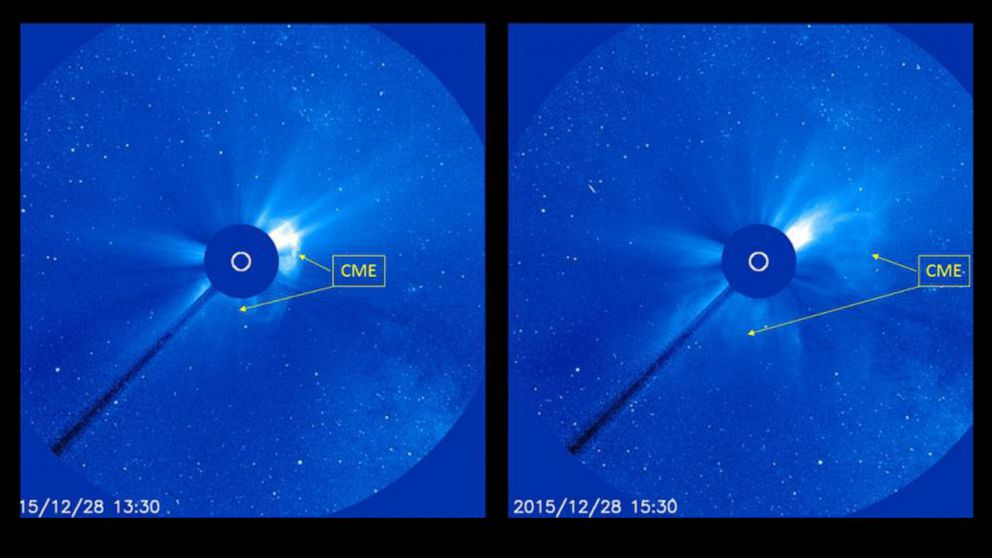Solar Storm Watch in Effect Through New Year’s Day
Earth could continue to experience effects from solar flare.

— -- A solar storm watch will be in effect through New Year's Day after a powerful flare hit Earth today, according to the National Oceanic and Atmospheric Administration's Space Weather Prediction Center.
NOAA classifies solar storms on a scale of one to five (one being the weakest; five being the most severe). Current conditions are classified at a moderate G2 level, meaning it could have the strength to cause fluctuations in some power grids, intermittent radio blackouts in higher latitudes and possible GPS issues.
"There is still a slight possibility that we will see G3 (Strong) storms as effects persist," a bulletin posted on NOAA's website said.
The storm is the result of a coronal mass ejection -- basically a flare of charged protons and electrons -- that burst from the sun earlier this week. Once they reach Earth, the particles interact with the planet's magnetic field to paint the sky in dazzling colors.
It's expected the effects of the storm could allow the Northern Lights to dip as far south as New York, Wisconsin and Washington state tonight, providing a spectacular end to 2015.
NOAA predicts the effects of the storm could linger into New Year's Day, which is currently forecast to have a minor G1 geomagnetic storm warning.




